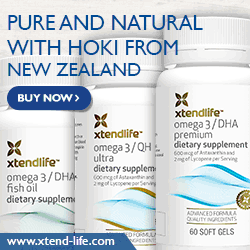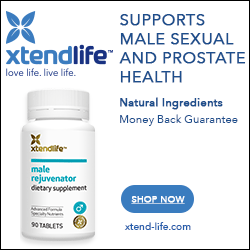Deceptive Label Claims #1: “No Preservatives”
As implied in the previous post, supplements aren’t the only products that are marketed using deceptive ads and label claims. The food industry often uses similar tactics… it’s just more subtle. The PR people for most food corporations are Jedi Masters when it comes to manipulating images and telling selective truths; so while they don’t actually tell lies, it’s often hard to see the difference.
For example, back in my grad school daze, Campbell Soup started an ad campaign based around a catchy slogan: “Soup is good food.” The television ads, in particular, used images of home cooked soup to lead viewers to a logical fallacy:
- Soup = good food
- Campbell’s = soup
- therefore Campbell’s = good food.
As we all know, of course, soup isn’t necessarily good food – depends on what you put in it. But that’s where all the soft-focus “home-cooked” imagery came in, ’cause everyone knows that homemade soup is loaded with good stuff.
So it was a neat trick, particularly since the print ads were embellished with factoids extolling the vitamin/mineral content of the soups. I recall one ad, for example, that solemnly proclaimed Campbell’s tomato soup contained as much vitamin C as a serving of apricots. This was true enough, although the company conveniently failed to mention that apricots are NOT a particularly good source of vitamin C. The irony is that Campbell was proclaiming for all the world to see that their product was – at best – a mediocre source of Vitamin C; but doing it in a way that would leave the opposite impression. After all, most people know that fresh fruit provides vitamin C, right? And if apricots weren’t a good source of vitamin C, why on earth would the company be bragging about it?
The point is that images and virtuous-sounding claims can create a “halo effect” around products. So manufacturers don’t have to tell lies… why bother when subtle manipulation of people’s expectations and assumptions will do the trick?
Which brings us to a similar gambit currently being exploited to the hilt by Stouffer’s. To wit:
Serving You Homemade Taste Without Preservatives At STOUFFER’S®, delivering fresh, delicious food to your table is our number one priority. That’s why we make America’s favorite Lasagna without any preservatives. We understand that it’s not always easy to eat well, but why compromise when you don’t have to?
…Yes, we make our Lasagnas with great care — and without preservatives. So, look for the new “No Preservatives” flag on STOUFFER’S® Lasagnas and know that tonight you’ll enjoy a fresh, tasty and satisfying meal.
LOL – they practically beat consumers over the head with the “no preservatives” message. 😀 The brass at Stouffer’s obviously thinks this is a winning strategy.
What’s so deceptive about this particular ad pitch? It’s pretty simple, really.. Stouffer’s is relying on another logical fallacy:
- Preservatives = bad/unhealthy
- Stouffer’s food = no preservatives
- therefore Stouffer’s food = healthy
Just like “soup = good food,” however, the presumption that all preservatives are bad is flawed. A few, such as sodium nitrite or sulfur dioxide are questionable, but most are quite harmless. But – beyond this – we’re talking about frozen foods here. You don’t need preservatives in frozen foods at all, since they aren’t subject to microbial spoilage, are not exposed to light, and are maintained at a temperature guaranteed to slow harmful oxidation reactions down to a crawl. Freezing is – in and of itself – a method of food preservation. Preserved foods don’t need preservatives. 😀
In other words, Stouffer’s claim to virtue is so much hot air. The company isn’t lying, of course (after all, the food doesn’t contain preservatives), but they’re using this empty fact to cast a halo over the products. Needless to state, the halo fades pretty quickly when you peruse the nutritional labels. “Eating well” is not in the cards for a Stouffer’s customer: the regular products range from so-so to appalling, w/respect to calories, fat, sodium, protein and basic micronutrient content. Even the “Lean Cuisine” entrees fail to impress. They’re lower in fat than the regular entrees, to be sure, but rely primarily on small serving sizes to live up to the “low cal” claims. A serving of the “Chicken and Vegetables” for example, provides only 20g of protein – roughly the equivalent of 2 oz. of cooked chicken breast. That ain’t much – even for me, and I tip the scales at a mighty 125 pounds.
So – as always – it’s best to make decisions about which food products to buy based on the actual information on the label, not feel-good – and sometimes meaningless – claims and soft-focus imagery. Your wallet – and your body – will thank you.




June 30, 2010
Deceptive Label Claims #1: “No Preservatives” – http://blog.ultimatefatburner.com/2010/0…
July 1, 2010
I agree the real important info is on the nutrition label. The problem is getting people to read it. My wife is an excellant example. If she sees “less fat”, “fat free”, “sugar free”, “whole grain” or “healthy choice” she things it is good for you.
I don’t know how many times I have turned the package around and showed her it wasn’t so good. She continues to this day to read the front and ignore the back.
I don’t know how you change the way people think or choose when it comes to that. It needs to happen before better choices are made.